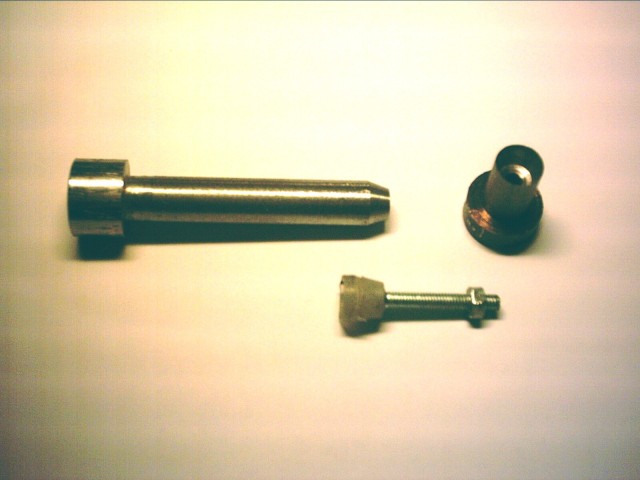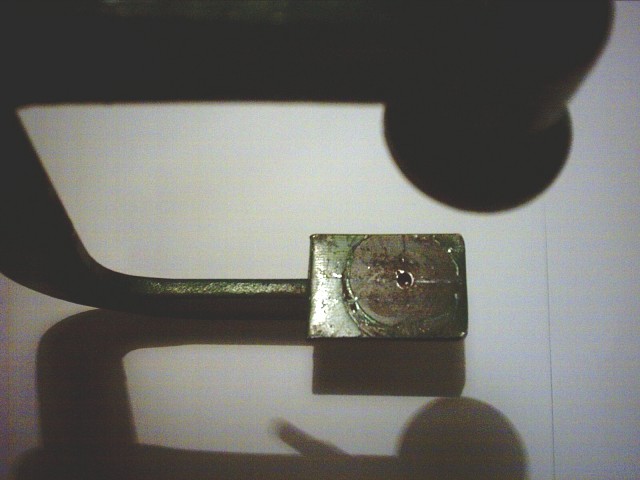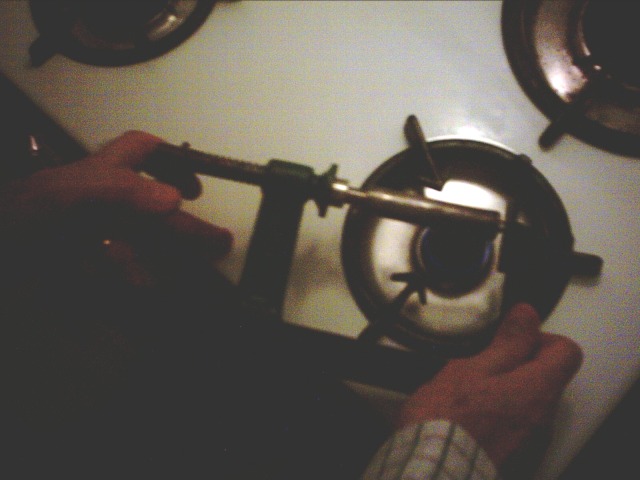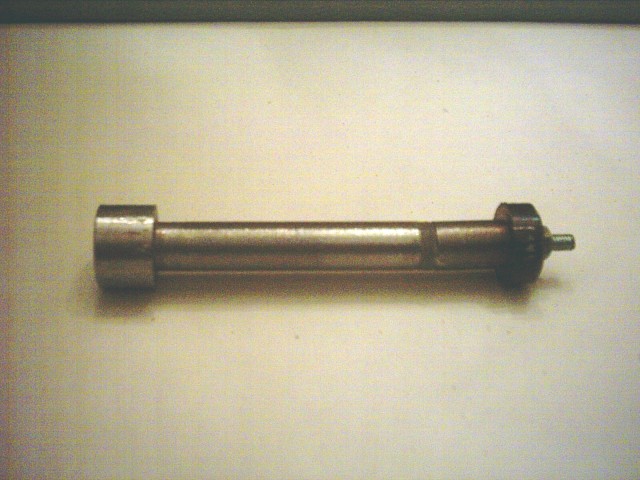
How to build a micropump
for the feeding of the heater of a vapor motor.
We distinguish the two principal parts:
Construction of the principal body
Construction of the piston
In the construction of the small piston most greater difficulty is the estate, that has to be almost perfect to forehead of pressures that can be also of about ten atmospheres.
Such difficulty is, to my opinion, surmountable realizing the gasket of the piston in material thermoplastic, that well it is lent both to a heat moulding in a special die, both to a workmanship through a small lathe.
The good material, to such intention it is the Teflon, that you/he/she is also sold in track of small cylindrical bars; nevertheless also the plastics of the containers of mineral water is all right, above all if worked to form of funnel, so that to compensate the usury in the time, that should be however contained, since he/she works with temperature water environment.
Particularly the plastics of a part of the cork must be used, less rigid than the transparent plastics of the bottle, even if, being thicker, it seems more resistant.
However some tests will give you the possibility to choose the best material.
The advantage of this second solution is to recycle plastics of good quality that you/he/she is thrown away normally, apart the diversified harvest of the refusals.
The difficulty, in surmountable reality easily is that to have to build a small die, that however has given me the possibility, and probably will also give to you the possibility to build your first product in recycled plastics!
The temperature of fusion of these plastic type, around the 130°C ÷ 150°C it simply allows the realization of such gasket heating I stamp him/it on the smallest flame in your kitchen, while the advancement of the piston of I stamp him/it you/he/she can be gotten progressively shutting a clamp of averages dimensions, among whose jaws will have positioned such die.
The hypothesis is that the water coming from the condensation of the vapor, after having heated the water of a reservoir goes out of the low part of this to a non superior temperature to 40°C or 50°C.
For more elevated temperatures it will need to use the nylon instead (what a temperature of fusion has around the 220°C) or the teflon (temperature of fusion around the 320°C, watching out for not to overcome in this case the temperature of dissociation of the molecules that the issue of toxic substances would cause).
Also the control of the attainment of the temperature of fusion of the plastics simply effects him noticing the progressive diminution of the strength of necessary torsion for the advancement of the pistoncino of I stamp him/it, that is made to advance up to the position corresponding to the moulding of the aforesaid gasket to that point.
During this phase there is no possibility that the plastics can catch fire, because completely contained in I stamp him/it excluding the air that would be necessary for its combustion.
Then it removes from him from the stove, he cools under the running water in few second and, with a minimum of patience and the aid of a pair of pliers it is extracted from I stamp him/it.
With this procedure it also resolves him in optimal way the connection among the gasket and the support, the hexagonal head of a grapevine filleted by 4 mms of diameter, turned for instance opportunely to form of trunk of cone.
Such support will go then screwed on an auction of greater diameter, to es. 8 mms, with hole previously filleted, that will constitute the stem of the pistoncino of the micropompa.
To guarantee the perfect estate of such pistoncino, the hole of I stamp him/it it will have to slightly have a superior diameter to that of the cylinder of the micropompa.
To es. I stamp him/it you/he/she must be perforated with a point of the diameter of 10,5 mms while the cylinder of the micropompa will be realized through a point by 10 mms of diameter.
The insertion of the pistoncino to make possible, the cylinder of the micropompa must opportunely be flared in the initial part.

piston of I stamp him/it matrix and pistoncino of the micropompa gotten,

sees external of the stamp at the beginning of the compessione

to hold up better the stamp it is necessary to do, on the fixed terminal of the clamp a non passing hole of the same diameter
of the screw support of the pistoncino (4 mms), or little more, in which will be set the part of the screw that escapes from the stamp.

place I stamp him/it loaded with the correct plastic quantity among the jaws of the clamp him it heats him on the stove and,
gradually rotating the screw, You bring the piston of the stamp in the final position.

together of the three elements in the final phase of the fusion inside the cylinder of the stamp
sees external of the stamp at the end of the compression; they follow the cooling and the extraction of the pistoncino
The surplus plastics will occupy the thin layer among the piston and the cylinder of the stamp and must be removed.
Construction of the principal body
Relatively gives the complex structure of such part, the best solution it is that to realize him/it through fusion and lead casting or also league antifrizione (to es. lead - antimony) or also league for welding of the components electronic lead - pond, in a chalk die, with the technique of the "lost wax."
It deals with realizing a model in wax of the body of the micropompa, and to dress again him/it of chalk (also filling with chalk the parts cave).
After the chalk he is well dried, he heats I stamp him/it gotten making to strain and eliminating the wax.
To this point, it heats him in a small crucible, that, gives the limited reached temperature, it can be also a small iron little pot used in the kitchen not anymore, and, under safety conditions, isolating the edge of the kitchen with material refractory, es. sand, a suitable quantity of the aforesaid league a pò heats him over the temperature of fusion and is subsequently strained in the stamp, positioned nearby and possibly place above other refractory material (es. sand).
Once allowed to cool, breaking around the chalk and inside the product of fusion, it can be finished up in operation of the wanted characteristics.
return to the constructive characteristics